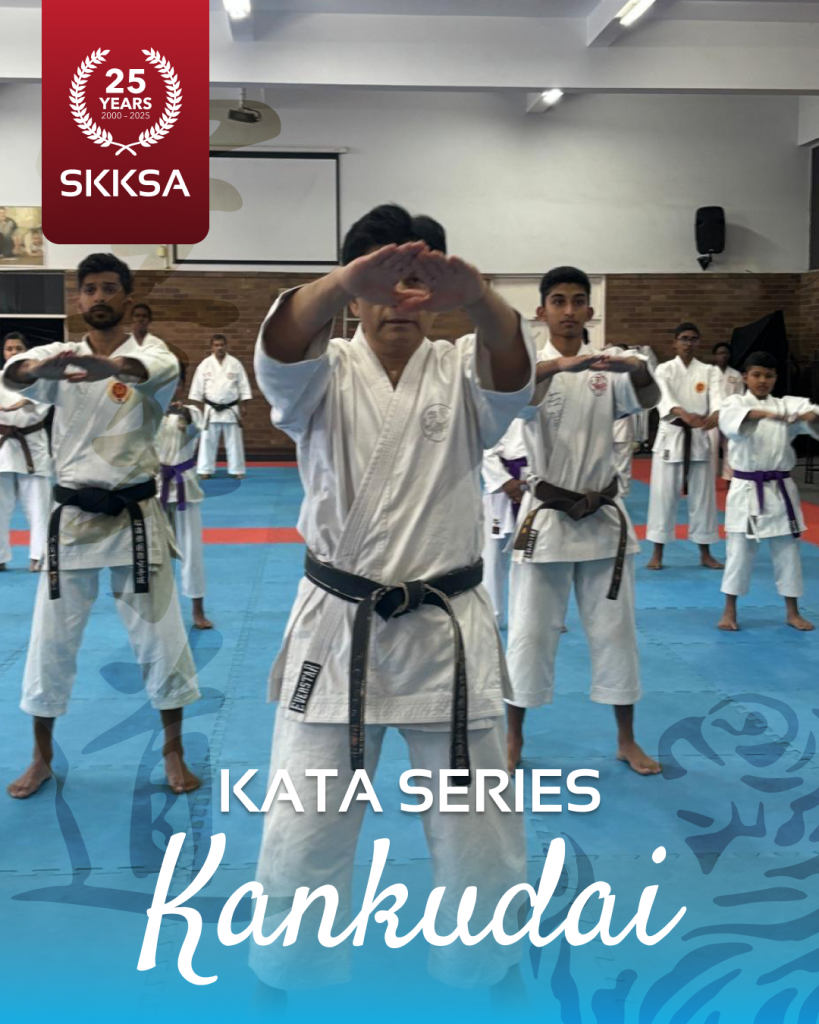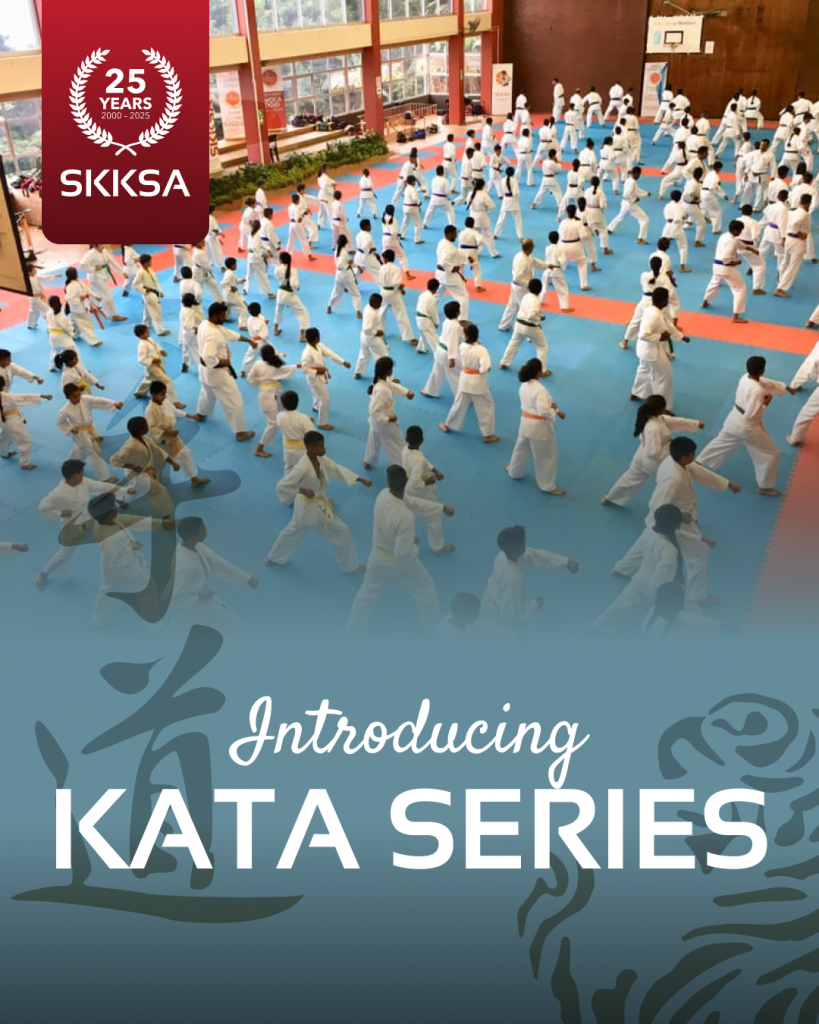
We continued our kata series last week with a very interesting kata – Kankudai.
As part of the sentei list of katas, Kankudai is introduced from brown belt onward, and is among the choices offered as a tokui or favorite kata to be performed at either 1st kyu or Shodan examinations.
With a series of 65 movements Kankudai takes first place for the longest kata in the Shotokan curriculum, and its bold and dramatic movements far surpasses its smaller cousin Kankusho.
Kankudai was adapted and brought into Shotokan by Gichin Funakoshi himself, the founder of Shotokan, in the 1930s. The name translates to “Looking at the Sky” or sometimes also referred to as “Rising sun”, both meanings taken from the starting movements of the kata.
The kata consists of some very basic movements, required to be performed at a high level of proficiency, given that it can be chosen as an entrance to Shodan grade. The movements are dynamic, complex, and if performed at the correct tempo, the kata execution should last 90 seconds. While the movements are deceptively simple, and references can be made to similar combinations in the Heian katas studied as karate beginners, it is the bunkai that sets Kankudai apart. Many of the moves are designed to control and or disarm someone with a stick, and the kata bunkai symbolizes attack and defense against eight opponents.
Despite this kata’s deep complexities, dynamic bunkai and importance in our syllabus, it is still one that represents modesty in karate, hence the humbling name, ‘Looking to the Sky’. A true karate practitioner will be mindful of this when practiced Kankudai and bring that humility and grace into all aspects of their karate practice.



